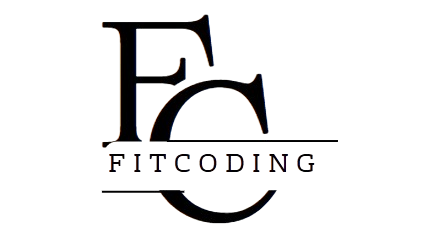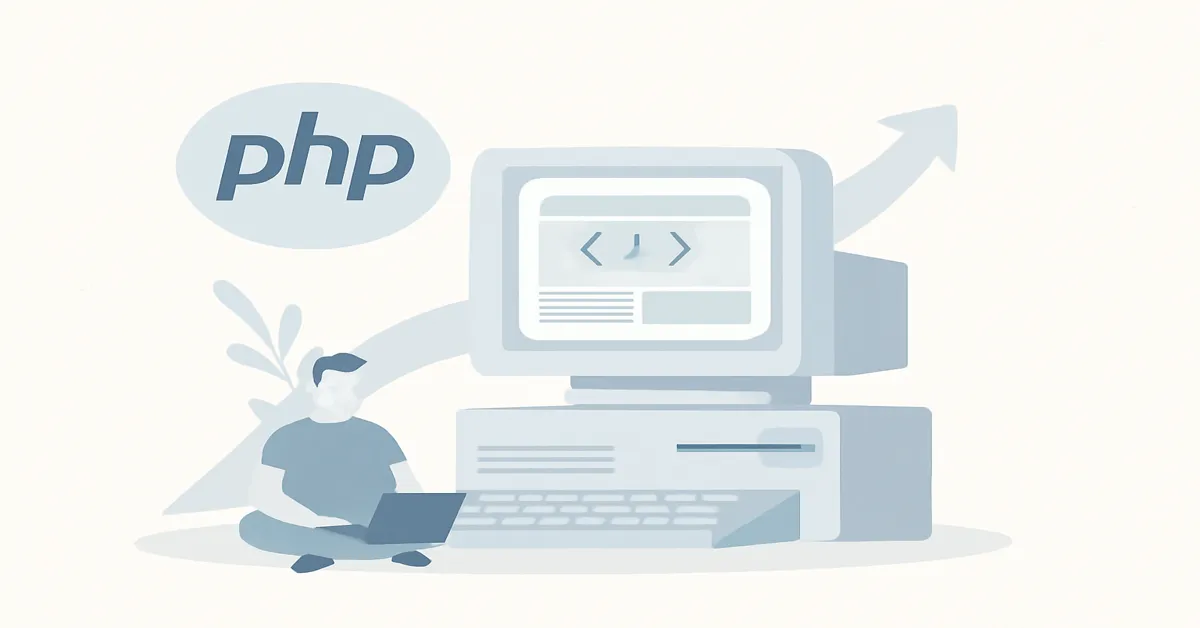In the world of programming languages, few have had as lasting an impact on the development of the web as PHP. Created in the mid-1990s by Rasmus Lerdorf, PHP has gone from a simple script to a full-fledged programming language that powers a significant portion of the web today. Its journey from a basic tool to the backbone of dynamic web development serves as a testament to how programming languages can evolve in response to the changing needs of developers and users – History of PHP.
While PHP might not always receive the same level of attention as newer languages, its relevance in modern web development cannot be overstated. As we trace the history of PHP, we’ll see how it transformed from a simple personal project into an essential language for dynamic websites, e-commerce platforms, and content management systems (CMS) – History of PHP.
Section 1: The Birth of PHP
1.1 The Early Days: Rasmus Lerdorf’s Personal Project
PHP’s story begins in 1993, when Rasmus Lerdorf, a Danish-Canadian programmer, created a set of CGI (Common Gateway Interface) scripts to track visitors to his online resume. Initially, these scripts were designed to simply count page views and manage a small personal website. This collection of scripts was called “Personal Home Page Tools”, which eventually became the acronym PHP.
The language’s earliest incarnation wasn’t a programming language at all, but rather a set of pre-built tools that allowed for the dynamic handling of web pages. It was simple, fast, and effective for its intended purpose: building and managing dynamic content – History of PHP.
1.2 PHP/FI: The First Major Milestone
Around 1994, Lerdorf enhanced the PHP toolset by integrating a Form Interpreter (FI), which added more dynamic capabilities. He called it PHP/FI (Personal Home Page/Forms Interpreter). This was PHP’s first major milestone, transforming the project from a small set of scripts into a more robust scripting tool for web developers. The tool enabled users to embed dynamic content directly into HTML pages, a significant step forward for web development at the time.
At this stage, PHP was still quite primitive. It lacked many features we associate with modern programming languages, such as object-oriented programming (OOP) and databases. However, it did allow developers to interact with forms, making it a valuable tool for creating dynamic web applications.
Section 2: The Rise of PHP as a Full-Fledged Programming Language
2.1 The Creation of PHP 3: A Turning Point
PHP’s true transformation came in 1997 when Lerdorf began working with two developers, Andi Gutmans and Zeev Suraski, to rewrite the language’s core. Their goal was to create a more robust, scalable, and efficient version of PHP that could handle the increasing demands of modern web development.
This collaboration resulted in PHP 3, released in 1998, which was the first official version of PHP as we know it today. PHP 3 introduced a full scripting engine, support for a wider range of databases, and the ability to execute complex tasks on the server-side. It was no longer just a set of basic tools, but a fully-featured programming language that could power dynamic websites and applications.
The success of PHP 3 can be attributed to its simplicity and ability to be easily embedded within HTML. This made it an attractive option for web developers, especially as the internet was becoming more interactive and dynamic. PHP quickly gained popularity among developers who needed a lightweight solution for server-side scripting.
2.2 PHP 4: The Era of Performance and Stability
By 2000, PHP had already established a strong user base, and the language’s performance became a key concern. Enter PHP 4, released in 2000, which included significant improvements to the language’s speed and stability.
PHP 4 introduced a Zend Engine, developed by Andi Gutmans and Zeev Suraski, which served as the foundation for future versions of the language. The Zend Engine optimized PHP’s performance by improving the parsing and execution of scripts, making PHP much faster than before.
Additionally, PHP 4 introduced session management, output buffering, and improved error handling, which made the language more capable and reliable for developers. PHP 4 became widely adopted by web developers, and it marked a major step in PHP’s evolution toward becoming a mainstream language for web development.
Section 3: PHP’s Dominance in the Early 2000s
3.1 PHP and the Rise of Content Management Systems
One of the main reasons PHP gained such widespread adoption in the early 2000s was its compatibility with popular content management systems (CMS). The simplicity of PHP and its ability to work seamlessly with databases made it the ideal language for developing content-driven websites.
CMS platforms such as WordPress, Joomla, and Drupal were built on PHP, and as these platforms grew in popularity, so did PHP itself. By 2005, WordPress had become the most widely used CMS in the world, thanks to its ease of use, flexibility, and extensibility through plugins—all powered by PHP.
The rise of e-commerce platforms like Magento and PrestaShop, which were also PHP-based, further cemented PHP’s dominance in the web development world. PHP provided a quick, effective solution for building content-driven websites and online stores, contributing to its growing reputation as the language of choice for web developers.
3.2 PHP 5: The Introduction of Object-Oriented Programming
As PHP’s capabilities expanded, the need for a more structured, object-oriented approach to programming became apparent. In 2004, PHP 5 was released, introducing full-fledged object-oriented programming (OOP) support.
PHP 5 included features such as classes, inheritance, interfaces, and exceptions, making it a much more robust language for building complex, enterprise-grade applications. The introduction of PDO (PHP Data Objects) allowed developers to interact with databases in a more secure and consistent manner, further extending PHP’s reach to enterprise applications.
This version also included improvements to the Zend Engine, which optimized the performance of PHP applications. With its introduction of OOP features and performance improvements, PHP 5 marked a significant milestone in the language’s development.
Section 4: Modern PHP and Its Continued Evolution
4.1 PHP 7: Performance and Efficiency
PHP 7, released in 2015, brought some of the most significant changes to the language, with a focus on performance optimization and efficiency. One of the key improvements in PHP 7 was the introduction of the Zend Engine 3, which drastically improved performance, making PHP applications run faster and consume less memory.
PHP 7 also introduced scalar type declarations and return type declarations, allowing developers to enforce more robust and predictable code. This version also removed deprecated features from previous versions, helping to streamline the language and make it more modern.
As a result of these improvements, PHP 7 was widely regarded as a turning point for the language. Websites and applications built on PHP 7 saw significant performance gains, which led to a renewed interest in the language, particularly for large-scale applications and web services.
4.2 PHP 8: The Future of PHP
The latest iteration of PHP, PHP 8, was released in 2020, introducing several major features aimed at improving the developer experience and further optimizing performance. Key features of PHP 8 include:
- Just-In-Time (JIT) Compilation: This feature allows PHP to compile code directly into machine language, further improving performance for CPU-intensive operations.
- Attributes: Attributes (also known as annotations) allow developers to add metadata to classes, methods, and properties, simplifying the process of reflecting on these elements at runtime.
- Named Arguments: PHP 8 introduced named arguments, which allow developers to pass function arguments by name, improving code readability and reducing errors.
- Union Types: This feature allows a function to accept multiple types for a parameter, enhancing type safety.
PHP 8 has solidified PHP’s position as one of the most powerful and versatile scripting languages, able to handle everything from small websites to large-scale applications.
Section 5: PHP’s Enduring Influence and Future
5.1 The Evolution of Web Development
PHP has had a profound impact on the way websites and applications are built. From its early days as a simple set of scripts to its current status as a mature, feature-rich programming language, PHP has played a central role in shaping the modern web. Its ability to work seamlessly with databases, handle dynamic content, and integrate with content management systems has made it the backbone of countless websites.
With PHP’s widespread use, many of the world’s largest websites, including Facebook, Wikipedia, and WordPress, have relied on it as the foundation of their platforms. Even as newer programming languages and frameworks have emerged, PHP continues to be a major player in web development.
5.2 PHP in the Future
The future of PHP looks promising, as the language continues to evolve with new features and optimizations. With the introduction of PHP 8 and the ongoing development of the Zend Engine, PHP remains competitive, providing developers with the tools they need to build fast, efficient, and scalable applications.
While PHP is often considered a “legacy” language in some circles, it remains a core part of the web development landscape. The rise of serverless computing and cloud platforms has only increased the demand for efficient, scalable programming languages like PHP. As new technologies emerge, PHP will likely continue to adapt, ensuring its place in the future of the web – History of PHP.
Conclusion
PHP’s journey from a simple scripting tool to a powerful programming language is a testament to its flexibility, adaptability, and the vast community of developers who have contributed to its growth. Today, PHP powers a significant portion of the internet, providing the foundation for millions of websites and applications – History of PHP.
From its humble beginnings as Personal Home Page Tools to its current status as the backbone of the web, PHP has continuously evolved to meet the demands of developers. As we look ahead, it’s clear that PHP will continue to play an essential role in shaping the future of web development. Whether you are a novice just starting with PHP or an experienced developer, understanding the language’s rich history is key to appreciating its enduring impact on the web – History of PHP.
Read:
Why All Languages Are Important in Coding: A Comprehensive Look at Diversity in Programming
FAQs
1. Who created PHP and when was it first introduced?
Answer: PHP was created by Rasmus Lerdorf in 1993. Initially, it was a set of CGI scripts for managing his personal website, before evolving into a full-fledged programming language.
2. What does PHP stand for?
Answer: PHP originally stood for Personal Home Page. However, as its functionality grew, it was later rebranded to PHP: Hypertext Preprocessor, which is a recursive acronym.
3. How did PHP evolve from its early versions to become what it is today?
Answer: PHP started as a simple set of CGI scripts, later evolving with contributions from Andi Gutmans and Zeev Suraski into PHP 3, introducing a full scripting engine. Subsequent versions like PHP 4 and PHP 5 brought performance improvements and object-oriented programming (OOP) support, with PHP 7 and 8 focusing on performance and modern features like Just-In-Time (JIT) compilation.
4. Why is PHP still widely used despite the rise of other languages?
Answer: PHP is widely used because of its simplicity, ease of integration with databases, and massive community support. It powers popular content management systems (CMS) like WordPress, which is a major reason for its sustained popularity in web development.
5. How has PHP contributed to web development over the years?
Answer: PHP has been a core tool for dynamic web content, allowing developers to easily create interactive, data-driven websites. It powers millions of websites and applications, with a significant portion of the web relying on PHP, especially with frameworks like Laravel and Symfony.











